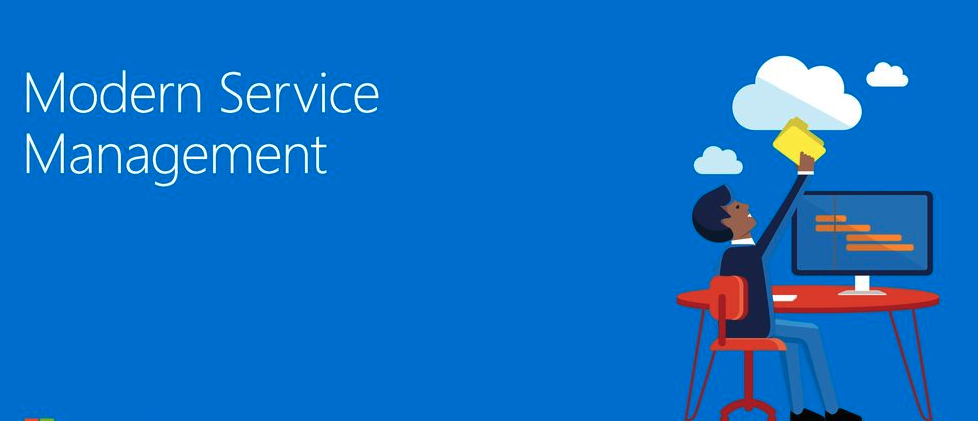
Modern IT Service Management (Image by ITSM Tools)

Modern IT Service Management (Image by ITSM Tools)
Today, modern IT Service Management has evolved into an integrated approach, leveraging automation and streamlined operations to enhance efficiency and improve user experiences.
The evolution of IT Service Management (ITSM) has been driven by the need to adapt to a rapidly advancing computing landscape and the recognition of IT’s critical role in overall business operations and digital transformation initiatives.
The shift towards modern ITSM has delivered notable benefits for organizations. Enterprise Strategy Group (ESG) research highlights improvements such as enhanced failure response, increased team collaboration, and reduced IT operations costs.
In this article, we will detail the modern approach to ITSM and how it can benefit your business.
Modern IT Service Management (ITSM) represents a transformative shift in how organizations manage and deliver IT services.
Today’s ITSM is different from traditional ITSM because ITSM does not simply react to problems that occur but instead uses technology strategically to add value to customers and the business.
This approach is characterized by its emphasis on automation, agility, and collaboration, aiming to enhance efficiency and foster innovation within the IT landscape.
At its core, modern ITSM integrates automation to streamline operations, aligning IT initiatives closely with broader business strategies.
For example, implementing frameworks like ITIL standardizes operations, making businesses more scalable and better equipped to meet growing demands.
Modern approaches in IT service management processes improve visibility into operations, allowing for proactive issue resolution and continual service improvement.
This integration is vital for allowing rapid adaptation and scalability in response to the dynamic demands of today’s business environment.
By moving away from manual, reactive processes typically associated with traditional help desks, modern ITSM adopts a proactive stance, leveraging automation and workflow integration to improve operational efficiency and significantly enhance user experiences.
The relevance of modern ITSM today fills critical gaps in expertise. It evolves technological capabilities in line with changing customer expectations and business priorities.
This evolution departs from traditional managed service provider models, primarily focusing on infrastructure monitoring.
Modern ITSM offers diverse technical knowledge and fosters strategic alignment between IT operations and business objectives, thereby becoming an essential component of digital transformation strategies.
The strategic partnership with service providers, underpinned by automation and integration, sets modern ITSM apart from its predecessors.
This shift has saved time and resources and enabled IT teams to concentrate on strategic initiatives, promoting a culture of innovation and agility and ensuring operational efficiency.
Automating work procedures with tools can reduce spending and enhance team productivity.
Modern IT Service Management (ITSM) incorporates several key characteristics that distinguish it from traditional approaches, focusing on enhancing efficiency, user experience, and agility in IT operations.
Automation in modern ITSM streamlines processes and reduces the need for manual intervention.
This leads to increased efficiency, cost reduction, and improved user experiences.
Planning for automation involves identifying repetitive tasks, ensuring operations are well-defined for successful automation, and selecting the right tools that align with organizational requirements.
This approach boosts productivity and allows IT teams to concentrate on strategic tasks that add value to the business.
Integrating cloud services into the IT service management system is another crucial approach for achieving scalability and flexibility.
Cloud services offer on-demand resources, which can be rapidly scaled up or down based on business needs, providing a flexible infrastructure that supports digital transformation.
This flexibility is essential for modern businesses to adapt quickly to market changes and customer demands.
Modern ITSM prioritizes user experience by designing user-friendly IT services that meet end-users expectations.
This user-centric approach ensures that IT services solve technical problems and enhance overall user satisfaction and productivity.
By focusing on the user experience, businesses can improve customer loyalty and drive better business outcomes.

Incorporating agile and DevOps methodologies into modern ITSM fosters a culture of increased collaboration and faster delivery.
These methodologies emphasize breaking down silos, enhancing communication across teams, and promoting continuous improvement.
This alignment supports rapid development cycles, enables quicker response to changes, and delivers high-quality services that meet the dynamic needs of businesses and their customers.
The following benefits highlight how a modern ITSM approach can transform business operations, making them more efficient, scalable, and cost-effective.
Modern ITSM streamlines the delivery of IT services through automation and integration, leading to reduced downtime and more efficient resolution of IT incidents.
This transformation enables organizations to respond swiftly to failures, increasing productivity and collaboration.
Automated tools and processes speed up response times and improve user satisfaction by providing faster resolutions to their issues.
The scalability afforded by modern ITSM is crucial for businesses aiming to grow and adapt to changing market demands.
By implementing ITSM frameworks, your business can easily tune its IT resources to its needs, ensuring that they can scale up or down as needed.
This flexibility supports business expansion and innovation, allowing companies to meet growing demands without compromising service quality or performance.
Modern ITSM contributes to more cost-effective IT operations by automating routine tasks and optimizing resource utilization.
This approach reduces the need for manual labor and minimizes the risk of errors, leading to significant cost savings.
Yes, with ITSM, your business can reduce spending and allocate IT budgets more efficiently by streamlining workflows and processes, ensuring you get the most value from your IT investments.
So, the bottom line is the evolution from traditional, reactive methods to a proactive, integrated approach, which highlights a commitment to delivering exceptional customer value through strategic technology use.
This strategic approach towards automation and streamlined operations not only conserves time and resources.
This modern ITSM also empowers IT teams to dedicate their efforts to strategic initiatives that drive innovation and agility.
Therefore, as your businesses continue to navigate the complexities of digital transformation, you need to optimize the power of modern ITSM.
The main goal is to strengthen your technology management practices, ensuring they remain agile, customer-focused, and ready to embrace the opportunities of the digital age.
And yes, deploying modern IT service management is not just an IT decision. It’s a strategic business move with a significant impact on an enterprise’s path to success and innovation.